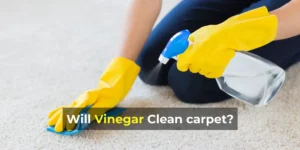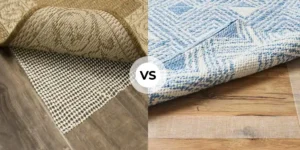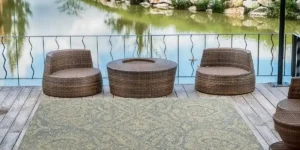Vinyl Flooring Installation is a great step for every homeowner. Because its durability, affordability, and variety of styles make it a great choice for any home.
Also, this flooring requires low maintenance and is easy to clean. So, this makes it ideal for busy households.
Well, vinyl floors come in various types, but today we will discuss one of these, which is LVP (Luxury Vinyl Plank). This type of vinyl flooring is designed to mimic the look of real wood flooring.
Now, when it comes to modern flooring, Luxury Vinyl Planks (LVP) is the coolest flooring option in the market. They bring a mix of good looks, toughness, and ease of maintenance.
But when you install LVP, you have two options for installation. One is Glue Down installation and another is a Floating installation.
So, now here’s a question arises: Glue Down vs Floating, which is best? Don’t worry about it.
In this article, we will make a detailed comparison of Glue Down vs Floating installation. So, stay with us.
What is Glue Down LVP?
Glue Down Luxury Vinyl Plank (LVP) involves adhering individual planks to the subfloor. As a result, a solid and long-lasting floor that stands firm. And making it a hot pick for homes and businesses alike.
Because, as a flooring material, it is hard, doesn’t move easily, and has a lot of resistance.
Pros
- It feels solid and stable underfoot because it is directly bonded to the subfloor.
- This flooring option is long-lasting and resistant to movement.
- For bathrooms and kitchens, the adhesive application enhances moisture resistance.
Cons
- Installation costs may increase if precise applications are required.
- It is difficult to remove, and it may damage the subfloor, so design changes are limited.
Factors Influencing the Decision to Choose Glue Down
- Subfloor Conditions: Glue-down LVP is an excellent choice when subfloor conditions are stable and smooth. When your LVP is installed over a smooth subfloor, it will last longer and perform better.
- Seamless Appearance: Most people opt for Glue-down LVP when they need a seamless look, especially for larger spaces. As a result of the direct attachment to the upper floor, the planks are unlikely to move or shift. The glue-down installation is the secret weapon to avoid any visible gaps or wonky seams.
- High-Traffic Areas: This method is well-suited to high-traffic areas due to its stability and durability. It’s like the toughest guy in the room, perfect for spots that get a ton of action. A direct bond to the subfloor provides firmness and wear resistance in heavy traffic areas.
What is Floating LVP?
A floating luxury vinyl plank (LVP) consists of individual planks that interlock with one another. But, it is not directly attached to the subfloor. This approach offers some serious flexibility, which makes it ideal for DIY enthusiasts.
Floating LVP has your back, adapting like a champ to whatever conditions you throw its way. It’s like the free spirit of flooring installations.
Pros
- Installing floating LVP is usually quick and easy with click-and-lock systems.
- In areas prone to moisture, LVP products are often water-resistant or waterproof.
- The durability of LVP is well known since it resists scratches, dents, and stains.
Cons
- In extreme conditions, some LVP products may still be susceptible to water damage.
- When LVP is severely damaged, it may not be refinished; it may need to be replaced.
Factors Supporting the Floating Method
- DIY-Friendly Installation: Floating LVP is an excellent choice for those who prefer a DIY installation. The floating LVP method requires less adhesive application precision than the glue-down method. As a result, floating LVP can be a cost-effective option for those who enjoy home improvement.
- Flexibility for Design Changes: The floating method offers greater flexibility for design changes and renovations. The advantage of floating LVP is that it can be more easily removed and replaced in the future.
- Sound Absorption: Floating LVP is like the unsung hero of quiet spaces. With its built-in underlayment, it acts as a sound-absorbing champion. Using an underlayment layer minimizes the transmission of sound and reduces impact noise.
Comparison Between: Glue Down vs Floating LVP
1. Subfloor Compatibility
In subfloor compatibility, Glue-Down LVP demands a smooth and level subfloor. It is less forgiving of imperfections by demanding proper subfloor conditions.
In contrast, Floating LVP is more forgiving of minor imperfections in the subfloor. It can be installed on a variety of surfaces, including concrete and existing floors.
So, in this subfloor compatibility comparison, Floating LVP beat Glue Down LVP.
2. Stability and Longevity
When it comes to stability and longevity, Glue Down is a better option than Floating. Because, Glue Down provides a stable, secure feel underfoot and resists plank movement.
Many people choose it for its durability and long-lasting flooring solution. Because it is ideal for high-traffic areas.
Or, Floating may move, and its longevity depends on its interlocking system. It’s chosen for its quick installation and flexibility.
3. Installation Process
Let’s break down the installation process for LVP.
Glue-down LVP installation requires adhesion to the subfloor and meticulous placement. It’s the go-to for those who want experts to handle the nitty-gritty.
Now, enter the Floating LVP. Click-and-lock or adhesive strip action, and no direct subfloor attachment. This project is quick and easy, perfect for a hands-on crew with basic skills.
So, here is a tie. Both methods are good for installation.
4. DIY-Friendliness
Now, let’s talk about the DIY-friendly nature of these methods.
In this comparison, the Glue-down method is not DIY-friendly. It requires professional expertise due to the precision needed during the adhesive application.
It is best suited for those who focus on flawless, professional installation. But, it is not a good choice for DIY enthusiasts and homeowners with limited skills.
Conversely, Floating LVP with its click-and-lock or adhesive strip mechanisms, is more DIY-friendly. It’s best suited for homeowners with basic skills. And it offers a faster installation process and cost-saving potential.
So, now we have cleared the Floating method as DIY Friendly.
5. Flexibility for Future Changes
Let’s talk about future-proofing your floors.
Well, Glue Down LVP is not so flexible for future changes. Because the removal of a subfloor can be complicated and may cause damage to it.
In contrast, the Floating LVP is easy to remove and replace without wrecking the subfloor. The flexible friend that goes with the flow of your design whims.
So, in this comparison Floating beats again Glue Down.
6. Aesthetics
When it comes to looks, Glue Down LVP is like a style maestro. It gives you that seamless, top-notch vibe – perfect for those who want their floor to look like a sleek work of art.
It is ideal for larger spaces. Plus, it brings that polished, high-end finish without visible seams stealing the show.
Or, Floating LVP has its charm, but the interlocking system might throw in some visible seams. Not seamless, but it’s quick to install.
Great for efficiency lovers who don’t mind a few seams in the design. It is ideal for smaller spaces where seams may be less noticeable.
7. Cost Considerations
Glue-down LVP can incur higher installation costs due to the professional knowledge. But, it’s a smart long-term investment. And it brings stability and durability to the floor.
But, Floating LVP is a budget-friendly method. It is inexpensive, especially if you’re rolling up your sleeves for a DIY installation. Despite similar material costs, DIY costs can be lower for those on a budget.
So, when you want a budget-friendly option, you should choose Floating LVP.
8. Environmental Impact
Glue Down LVP can be affected by adhesives containing volatile organic compounds (VOCs). Plus, thinking about how to dispose of it properly is part of the sustainability puzzle.
But, Floating LVP is an environmentally friendly method. Some versions use recycled materials, giving them a smaller environmental footprint. As a result, this option is considered more eco-friendly and sustainable.
9. Maintenance and Repairs
When it comes to maintenance and repairs, Glue Down LVP requires regular care and maintenance. But, the Floating LVP is not required. This requires minimal care and maintenance.
Furthermore, the Glue Down damaged planks may be challenging to replace. Also, its repair often requires professional help.
But, damaged Floating planks can be replaced more easily, making repairs DIY-friendly.
What’s the Best for My Home?
The choice between Glue-Down and Floating luxury vinyl flooring is really difficult. It depends on individual preferences and specific needs.
Glue-down offers superior stability and durability, while Floating is easier to install and flexible for future changes. So, think about stability, installation ease, and long-term plans when choosing an option.
Check Out More Articles Related to Floorings:
- NuCore vs. Lifeproof Vinyl Flooring – Which One Should I Choose?
- Choosing the Right Underlayment for Hardwood Flooring (7 Best Reasons)
- Robot Vacuum for Vinyl Plank Floors: 5 Best Models (Pros & Cons)





